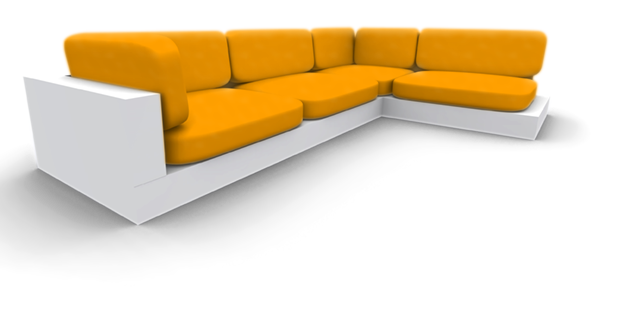1:
2:
3:
4:
5:
6:
7:
8:
9:
10:
11:
12:
13:
14:
15:
16:
17:
18:
19:
20:
21:
22:
23:
24:
25:
26:
27:
28:
29:
30:
31:
32:
33:
34:
35:
36:
37:
38:
39:
40:
41:
42:
43:
44:
45:
46:
47:
48:
49:
50:
51:
52:
53:
54:
55:
56:
57:
58:
59:
60:
61:
62:
63:
64:
65:
66:
67:
68:
69:
70:
71:
72:
73:
74:
75:
76:
77:
78:
79:
80:
81:
82:
83:
84:
85:
86:
87:
88:
89:
90:
91:
92:
93:
94:
95:
96:
97:
98:
99:
100:
101:
102:
103:
104:
105:
106:
107:
108:
109:
110:
111:
112:
113:
114:
115:
116:
117:
118:
119:
120:
121:
122:
123:
124:
125:
126:
127:
128:
129:
130:
131:
132:
133:
134:
135:
136:
137:
138:
139:
140:
141:
142:
143:
144:
145:
146:
147:
148:
149:
150:
151:
152:
153:
154:
155:
156:
157:
158:
159:
160:
161:
162:
163:
164:
165:
166:
167:
168:
169:
170:
171:
172:
173:
174:
175:
176:
177:
178:
179:
180:
181:
182:
183:
184:
185:
186:
187:
188:
189:
190:
191:
192:
193:
194:
195:
| using System;
using System.Collections.Generic;
using System.Linq;
using System.Text;
using System.Windows.Media.Media3D;
using System.Windows.Media;
using System.Windows;
using System.Windows.Media.Imaging;
namespace Cube3DLib
{
public class Cube : ModelVisual3D
{
Model3DGroup meshGroup;
RotateTransform3D myXRotateTransform3D;
RotateTransform3D myYRotateTransform3D;
RotateTransform3D myZRotateTransform3D;
AxisAngleRotation3D myXAxisAngleRotation3d;
AxisAngleRotation3D myYAxisAngleRotation3d;
AxisAngleRotation3D myZAxisAngleRotation3d;
Point3D center;
public Cube(Point3D center)
{
Name = "cube1";
meshGroup = new Model3DGroup();
this.center = center;
CreateCube();
myXRotateTransform3D = new RotateTransform3D();
myXAxisAngleRotation3d = new AxisAngleRotation3D();
myXAxisAngleRotation3d.Angle = 0;
myXRotateTransform3D.Rotation = myXAxisAngleRotation3d;
myYRotateTransform3D = new RotateTransform3D();
myYAxisAngleRotation3d = new AxisAngleRotation3D();
myYAxisAngleRotation3d.Angle = 0;
myYRotateTransform3D.Rotation = myYAxisAngleRotation3d;
myZRotateTransform3D = new RotateTransform3D();
myZAxisAngleRotation3d = new AxisAngleRotation3D();
myZAxisAngleRotation3d.Angle = 0;
myZRotateTransform3D.Rotation = myZAxisAngleRotation3d;
Transform3DGroup rotate = new Transform3DGroup();
rotate.Children.Add(myXRotateTransform3D);
rotate.Children.Add(myYRotateTransform3D);
rotate.Children.Add(myZRotateTransform3D);
meshGroup.Transform = rotate;
}
public void RotateX()
{
myXAxisAngleRotation3d.Axis = new Vector3D(0, 3, 0);
myXAxisAngleRotation3d.Angle = myXAxisAngleRotation3d.Angle + 15;
}
public void RotateY()
{
myYAxisAngleRotation3d.Axis = new Vector3D(3, 0, 0);
myYAxisAngleRotation3d.Angle = myYAxisAngleRotation3d.Angle + 15;
}
public void RotateZ()
{
myZAxisAngleRotation3d.Axis = new Vector3D(0, 0, 3);
myZAxisAngleRotation3d.Angle = myZAxisAngleRotation3d.Angle + 15;
}
public string Name { get; set; }
private void CreateCube()
{
Point3D a = new Point3D(center.X - 1, center.Y - 1, center.Z + 1);
Point3D b = new Point3D(center.X + 1, center.Y - 1, center.Z + 1);
Point3D c = new Point3D(center.X + 1, center.Y + 1, center.Z + 1);
Point3D d = new Point3D(center.X - 1, center.Y + 1, center.Z + 1);
Point3D e = new Point3D(center.X + 1, center.Y - 1, center.Z - 1);
Point3D f = new Point3D(center.X - 1, center.Y - 1, center.Z - 1);
Point3D g = new Point3D(center.X - 1, center.Y + 1, center.Z - 1);
Point3D h = new Point3D(center.X + 1, center.Y + 1, center.Z - 1);
GeometryModel3D front = new GeometryModel3D(BuildRectangle(a, b, c, d, new Vector3D(0, 0, +1)), new DiffuseMaterial(new SolidColorBrush(
Colors.Red)));
front.BackMaterial = new DiffuseMaterial(new SolidColorBrush(
Colors.Red));
GeometryModel3D back = new GeometryModel3D(BuildRectangle(e, f, g, h, new Vector3D(0, 0, -1)), new DiffuseMaterial(new SolidColorBrush(
Colors.Green)));
back.BackMaterial = new DiffuseMaterial(new SolidColorBrush(
Colors.Green));
GeometryModel3D right = new GeometryModel3D(BuildRectangle(b, e, h, c, new Vector3D(1, 0, 0)), new DiffuseMaterial(new SolidColorBrush(
Colors.Yellow)));
right.BackMaterial = new DiffuseMaterial(new SolidColorBrush(
Colors.Yellow));
GeometryModel3D left = new GeometryModel3D(BuildRectangle(f, a, d, g, new Vector3D(-1, 0, 0)), new DiffuseMaterial(new SolidColorBrush(
Colors.Orange)));
left.BackMaterial = new DiffuseMaterial(new SolidColorBrush(
Colors.Orange));
GeometryModel3D bottom = new GeometryModel3D(BuildRectangle(e, b, a, f, new Vector3D(0, -1, 0)), new DiffuseMaterial(new SolidColorBrush(
Colors.Silver)));
bottom.BackMaterial = new DiffuseMaterial(new SolidColorBrush(
Colors.Silver));
GeometryModel3D top = new GeometryModel3D(BuildRectangle(d, c, h, g, new Vector3D(0, 1, 0)), new DiffuseMaterial(new SolidColorBrush(
Colors.Blue)));
top.BackMaterial = new DiffuseMaterial(new SolidColorBrush(
Colors.Blue));
meshGroup.Children.Add(back);
meshGroup.Children.Add(right);
meshGroup.Children.Add(left);
meshGroup.Children.Add(bottom);
meshGroup.Children.Add(top);
this.Content = meshGroup;
}
private MeshGeometry3D BuildRectangle(Point3D a, Point3D b, Point3D c, Point3D d, Vector3D normal)
{
MeshGeometry3D geometry = new MeshGeometry3D();
int baseIndex = geometry.Positions.Count;
geometry.Positions.Add(a);
geometry.Positions.Add(b);
geometry.Positions.Add(c);
geometry.Positions.Add(d);
geometry.Normals.Add(normal);
geometry.Normals.Add(normal);
geometry.Normals.Add(normal);
geometry.Normals.Add(normal);
geometry.TriangleIndices.Add(baseIndex + 0);
geometry.TriangleIndices.Add(baseIndex + 1);
geometry.TriangleIndices.Add(baseIndex + 3);
geometry.TriangleIndices.Add(baseIndex + 1);
geometry.TriangleIndices.Add(baseIndex + 2);
geometry.TriangleIndices.Add(baseIndex + 3);
return geometry;
}
}
} |











































